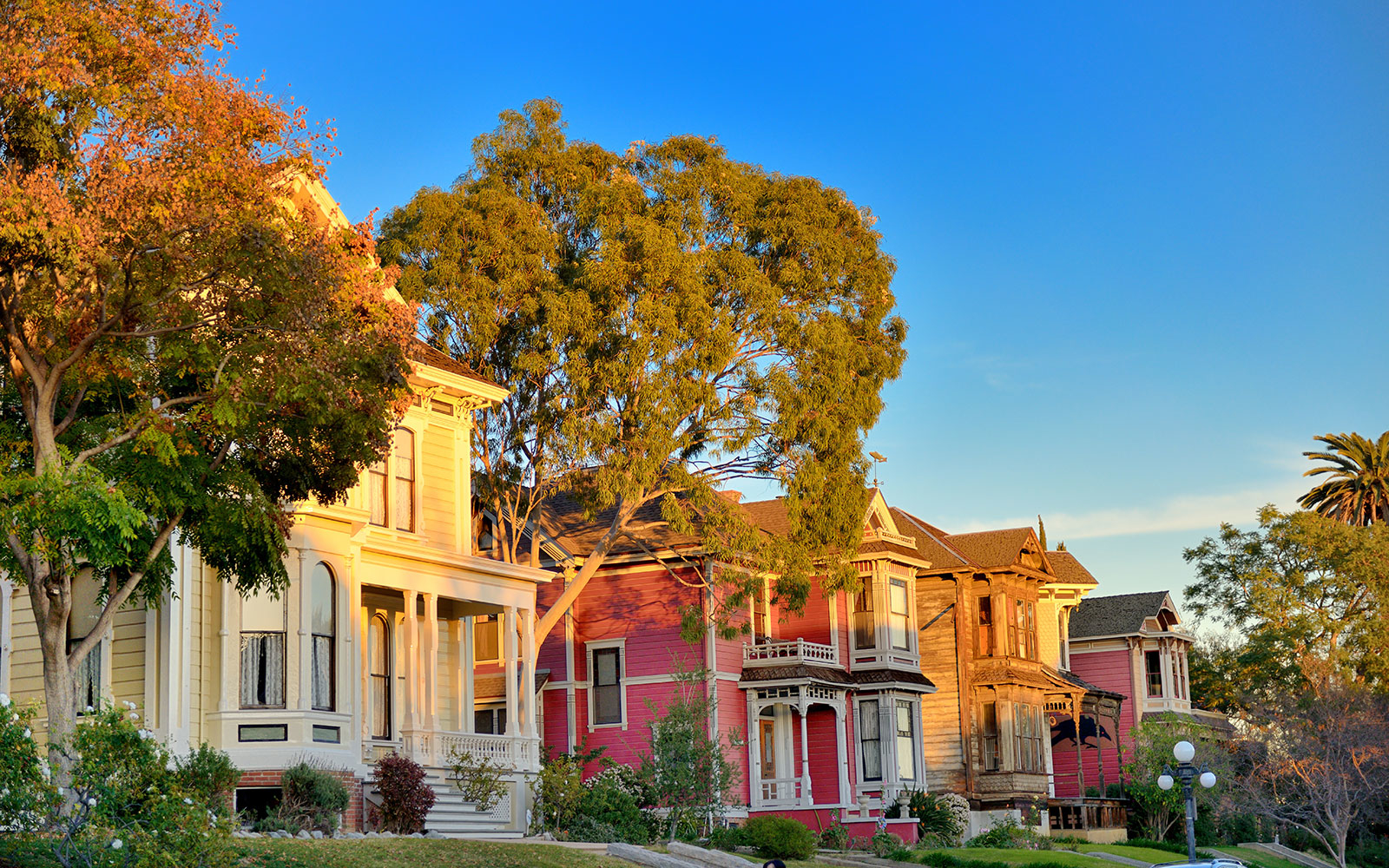
With its maze of freeways and heavily trafficked boulevards, it’s hard to imagine Los Angeles has tucked-away streets that are yet to be discovered. These aren’t back roads or alternate routes to use during rush hour, but avenues that speak to the city’s history, architecture, and diverse patchwork of international neighborhoods. Here are just a few we love.
Chung King Road in Chinatown is a hidden gem of eclectic galleries from up-and-coming Downtown L.A. artists that have put this historic neighborhood back in the spotlight. Though the road itself is quiet during the day, the sleeping dragon awakens on various Saturday nights, when you can take self-guided tours through galleries like Charlie James, Coagula Curatorial, Fifth Floor Gallery, and more. Be sure to stop by some of Chinatown’s new hip restaurants like Pok Pok, RamenChamp, Chego, or Burgerlords while you’re in the area.
On Saturdays and Sundays, the stretch of Olympic Boulevard just west of Central Avenue sometimes referred to as the Piñata District transforms into what’s been affectionately named Mercado Olympic. The weekend marketplace draws Latino families and lovers of Mexican street food not only to seek out party supplies, but for some of the most authentic eats this side of the border. You’ll find everything from funky huitlacoche and beautifully braided Oaxaca cheese to freshly fried churros dusted with sugar. Added bonus: some shops sell produce and spices for stocking your fridge, so you can bring the flavor of L.A. back into your own home.
Tucked away from the hipster enclaves on the easternmost part of Echo Park lies Angelino Heights, one of the city’s oldest districts, only slightly preceded by Bunker Hill. The neighborhood’s well-preserved Victorian Era, Queen Anne and Eastlake homes have been pictured in countless films throughout the years, with the highest concentration built along Carroll Avenue. The L.A. Conservancy leads walking tours through Angelino Heights, including two private interior home tours.
Though Hollywood is often thought of as being the center of the entertainment industry, Downtown L.A.’s Broadway Theatre District was actually the hub of the industry before World War II. Located between 3rd and 9th Streets on South Broadway, it’s actually the largest theater district listed with the National Register of Historic Places, with 12 architecturally significant movie theaters built between 1910 and 1931. Though few still function as places to catch a picture, the L.A. Conservancy offers walking tours through this neighborhood, too.
Formerly known as Little Osaka, Sawtelle Japantown is a historic West L.A. enclave where Japanese immigrants began settling in the early 1900s, initially farming barley and celery in open fields. Many of those living in the area were sent by the U.S. government to Manzanar and other internment camps during World War II, but resettled afterwards, forming the basis for the community that exists today. Now trendy eateries, bars, boba shops, and boutiques line Sawtelle Avenue, making it one of the city’s most underrated streets with a storied past.
Many hoity-toity Angelenos wouldn't dare take a trip to the Valley, let alone for an evening out eating. What their city-centric views are missing out on, though, is Sushi Row along the iconic Ventura Boulevard in the San Fernando Valley. The trend of dining on fresh fish actually started in the SFV in the 1980s, making it the first spot outside Japan to indulge in the delicacy that’s captivated the globe. Spots like Asanebo and Sushi Iki are well worth the trek up the 101.
Admittedly, 6th Street is hardly a secret when it comes to using the thoroughfare as a shortcut during rush hour, but for out-of-towners, isn’t nearly as recognizable or iconic as Hollywood, Sepulveda, or Wilshire Boulevards. The appeal of this east-to-west street is that it takes a driver from LACMA to Downtown through neighborhoods that embody the diversity of L.A.—from Hancock Park’s oak-lined streets and stately homes to Koreatown’s kinetic karaoke joints and nightlife, and the now white-hot hipster cocktail bars in Downtown’s Historic Core.
At the bottom of the appropriately named Wonder View Drive you’ll find one of the city’s lesser-trekked walking paths around the Hollywood Reservoir. The manmade lake designed by William Mulholland is surrounded by oak, pine, eucalyptus, agave, and sage, as well as gorgeous Hollywood homes, some native wildlife, and even a local winery. It’s the ideal place to view the Hollywood sign, and certainly less trafficked than the hike from Griffith Park.